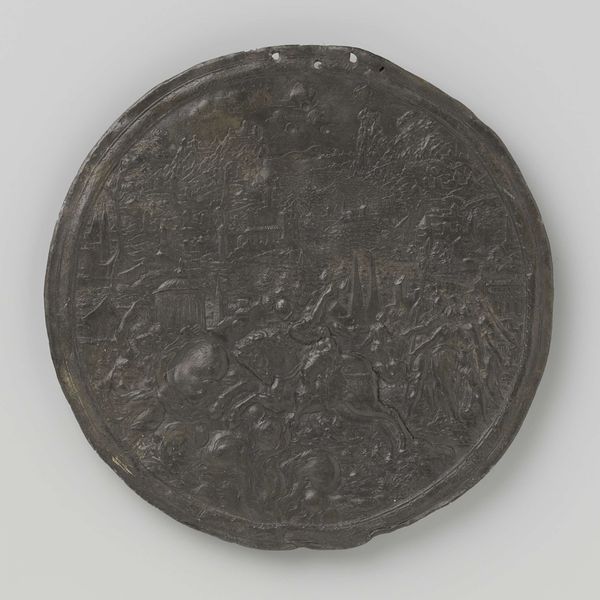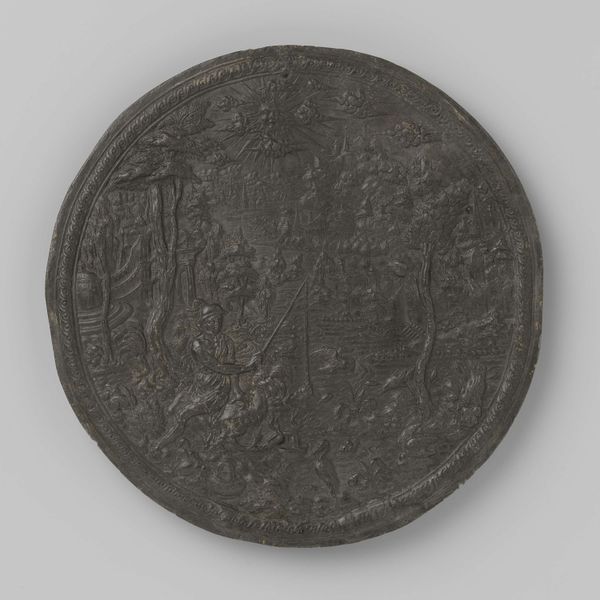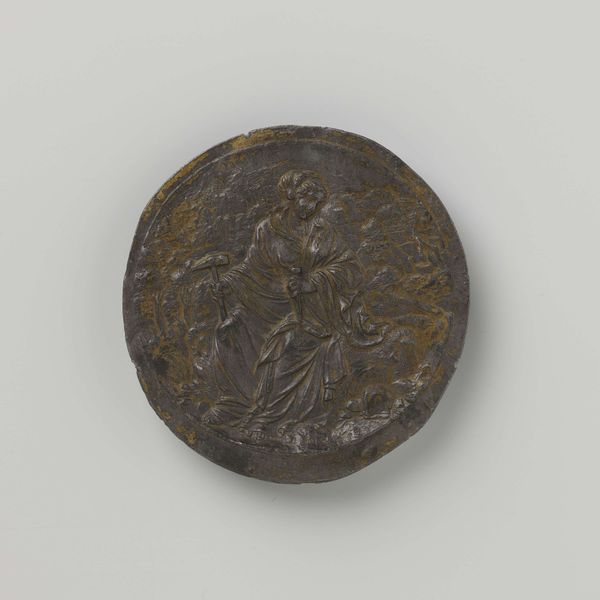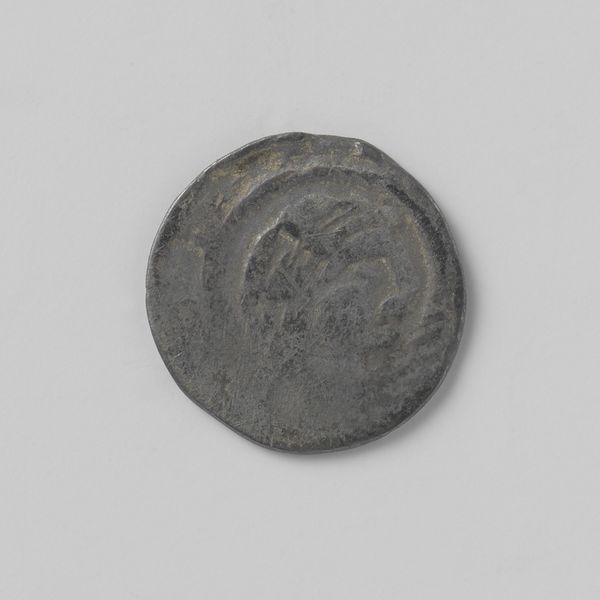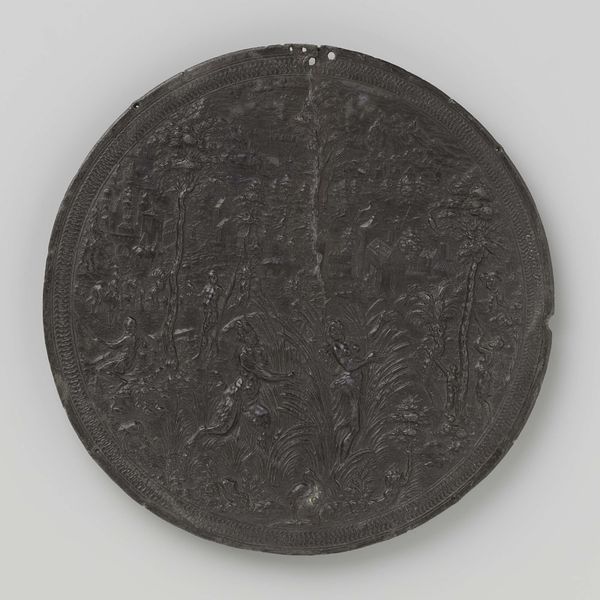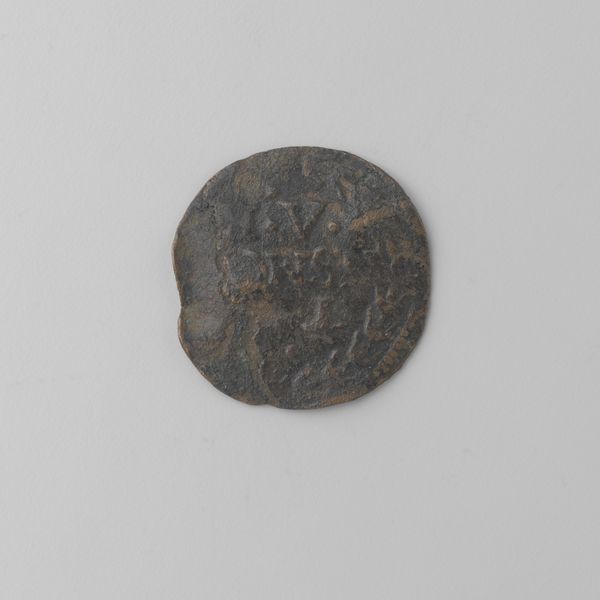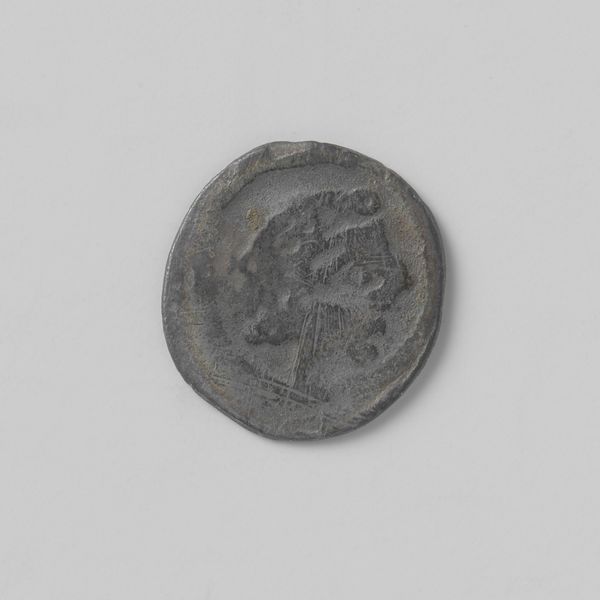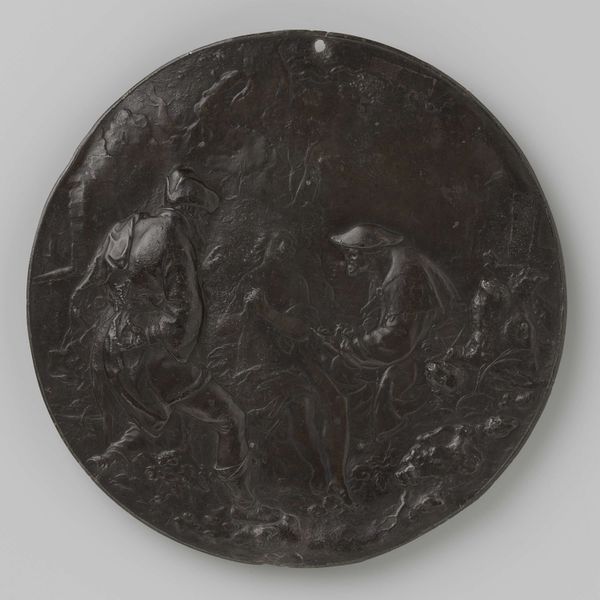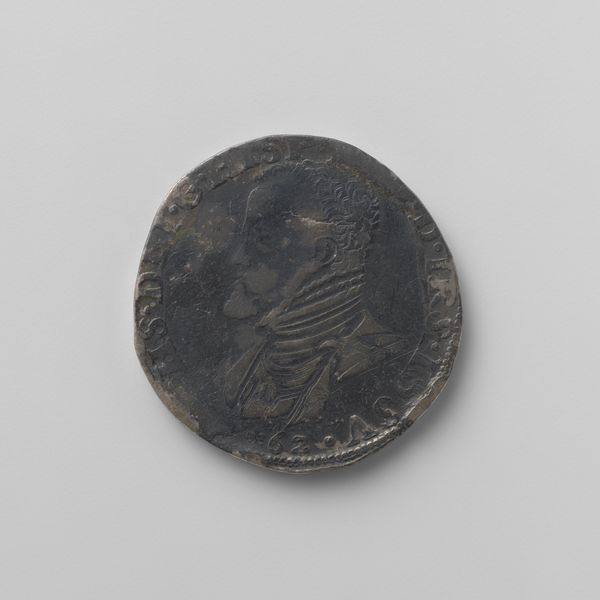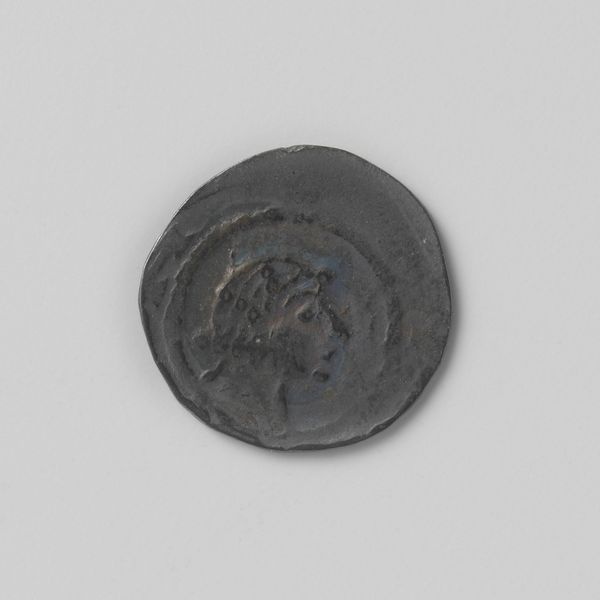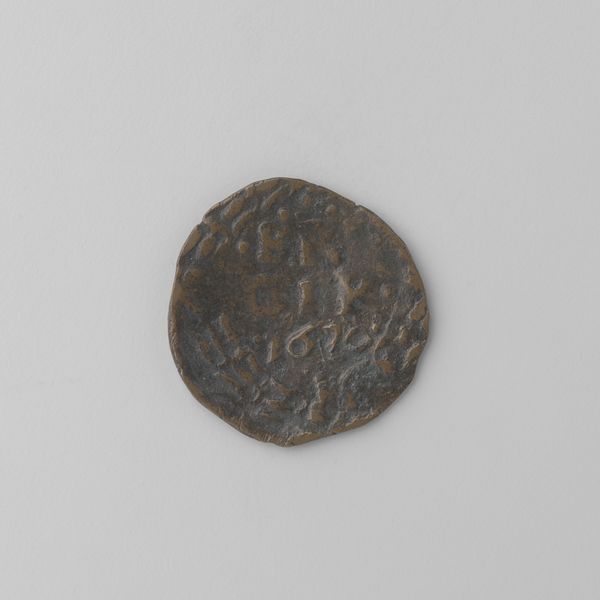
metal, relief, bronze, sculpture
#
metal
#
sculpture
#
relief
#
bronze
#
mannerism
#
sculpture
#
history-painting
Dimensions: diameter 18.5 cm, weight 406 gr
Copyright: Rijks Museum: Open Domain
Editor: This bronze relief is called "Scylla en Minos" and dates back to 1569, created by Hans (?) Jamnitzer. The surface is pretty dark, and quite busy. It seems like the narrative is fighting to break through. What catches your eye compositionally? Curator: I am immediately drawn to the dynamism inherent in the Mannerist style. Notice how the artist has used the circular format to create a swirling, almost dizzying effect. The figures are densely packed, their forms elongated and contorted, a hallmark of Mannerist art. Consider the balance – or rather, the deliberate *imbalance* – of the composition. Do you see how the artist defies classical notions of harmony? Editor: I do see what you mean. It feels like there's a lot of tension, figures pulling in different directions. It almost feels like it might explode outward. Does the medium—bronze—contribute to that feeling at all? Curator: Certainly. The choice of bronze, and the manner in which it’s worked, contribute significantly. Observe the varying depths of the relief; some figures are almost fully in the round, while others are barely suggested. This creates a textured surface, a play of light and shadow that heightens the drama. Moreover, bronze lends a certain gravity and permanence, despite the frenetic activity depicted. The circular format too: a frame to restrain. The tension you identified now resonates, does it not, at a new formal level? Editor: Yes, that's fascinating. So much is happening just in the interplay of form and material. Thanks for helping me see beyond just the historical story being depicted. Curator: Indeed. Focusing on the internal, the formal arrangement, allows the object to express itself. It encourages a deeper appreciation for its complexity.
Comments
No comments
Be the first to comment and join the conversation on the ultimate creative platform.
